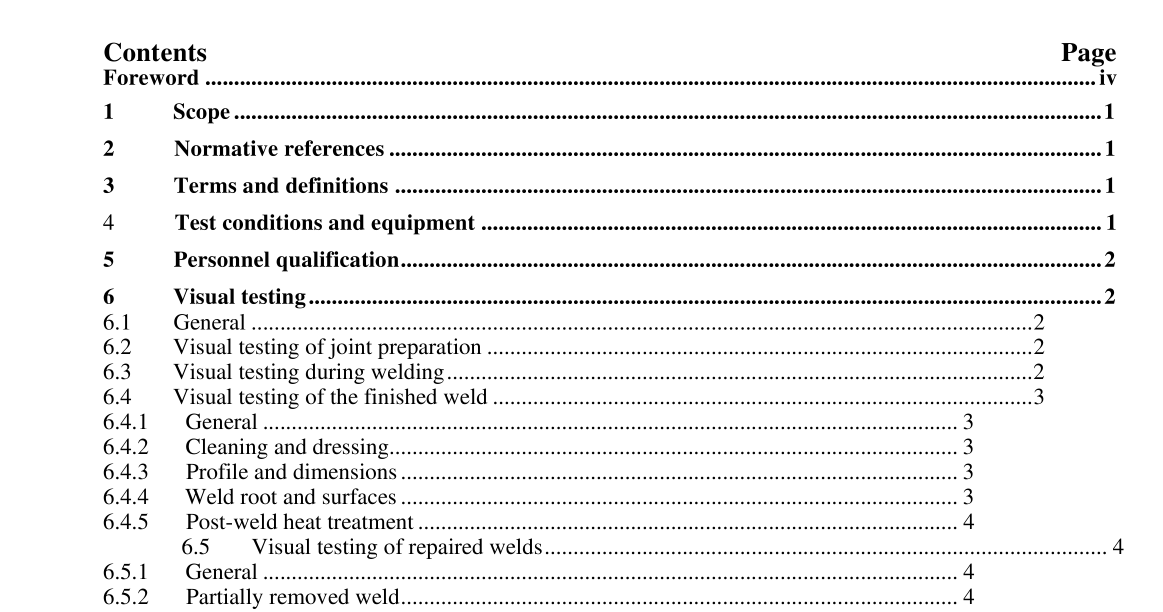ISO 17637:2016 pdf download.Non-destructive testing of welds — Visual testing of fusion- welded joints
1 Scope
This document specifies the visual testing of fusion welds in metallic materials. It may also be applied to visual testing of the joint prior to welding.
2 Normative references
There are no normative references in this document.
3 Terms and definitions
No terms and definitions are listed in this document.
ISO and IEC maintain terminological databases for use in standardization at the following addresses:
— IEC Electropedia: available at http://www.electropedia.org/
— ISO Online browsing platform: available at http://www.iso.org/ohp
4 Test conditions and equipment
The illuminance at the surface with white light shall be a minimum of 350 lx; wearing of tinted goggles (e.g.protective sunglasses) increases the minimum illuminance. However, 500 lx is recommended.For direct inspection, the access shall be sufficient to place the eye within 600 mm of the surface to be examined
and at an angle not less than 30° (see Figure 1).
5 Personnel qualification
Visual testing of welds and the evaluation of results for final acceptance shall be performed by qualified and capable personnel. It is recommended that the personnel performing indirect visual testing is qualified according to ISO 9712 or at an appropriate level in the relevant industry sector.
6 Visual testing
6.1 General
This document does not define the extent of visual testing. However, this should be determined in advance, e.g.by reference to an application or product standard.
The examiner shall have access to the necessary inspection and production documentation required.
Any visual testing prior to, during or after completion of the weld should be carried out while physical access is still possible. This may include the visual testing of surface treatments.
6.2 Visual testing of joint preparation
When visual testing is required prior to welding, the joint shall be examined to check the following:
a) the shape and dimensions of the weld preparation meet the requirements of the welding procedure specification;
b) the fusion faces and adjacent surfaces are clean and any required surface treatment has been carried out in accordance with the application or product standard;
c) the parts to be welded are correctly fixed in relation to each other according to drawings or instructions.
6.3 Visual testing during welding
When required, the weld shall be tested during the welding process to check the following:
a) each run or layer of weld metal is cleaned before it is covered by a further run, particular attention being paid to the junctions between the weld metal and the fusion face;
b) there are no visible imperfections, e.g. cracks or cavities; if imperfections are observed, they shall be reported so that remedial action can be taken before the deposition of further weld metal;
c) the transition between the runs and between the weld and the parent metal is so formed that satisfactory melting can be accomplished when welding the next run;
d) the depth and shape of gouging is in accordance with the WPS or compared with the original groove shape in order to ensure complete removal of the weld metal as specified;
e) after any necessary repairs/remedial action, the weld conforms to the original requirements of the WPS.
ISO 17637:2016 pdf download
